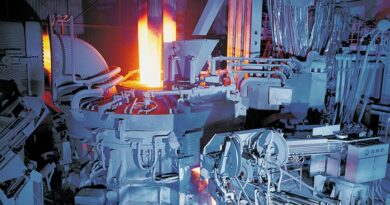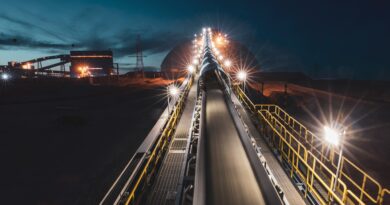Demand for platinum-based powertrains to experience strong growth
Platinum-based, proton exchange membrane (PEM) hydrogen fuel cells provide zero emissions electric mobility in fuel cell electric vehicles (FCEVs). When fuelled by green hydrogen, they offer emissions-free transport. Their application has the potential to assist with the decarbonisation of many industries, from transportation to construction, mining and beyond.
Bosch, a leading global supplier of technology and services, including PEM fuel cells, expects that by 2030 around one in eight newly registered commercial vehicles worldwide will be powered by a fuel cell, equivalent to an estimated 660,000 heavy-duty vehicles*. Its goal is for a FCEV truck to cost no more to operate than a diesel truck by then. With production on its fuel cell powertrain for trucks starting later this year, Bosch has increased investment in developing fuel cells for mobility solutions to almost one billion euros between 2021 and 2024.
Earlier this month, Volvo unveiled its new FCEV truck. Equipped with two fuel cell stacks that have a combined capacity to generate 300kW of electricity, the truck has a range of up to 1,000 km and a refuelling time of less than 15 minutes. Testing on Volvo’s FCEV truck is underway, with customer pilots to follow and full commercialisation planned for the latter part of the decade.
Volvo believes that hydrogen-powered FCEVs are especially suitable for long distances and heavy, energy-demanding assignments characteristic of the heavy-duty vehicle segment. It has also begun testing the world’s first PEM fuel-cell articulated hauler – a very large heavy-duty type of dump truck used to transport loads over rough terrain. The six-wheel vehicle weighs 35 tons and can be filled with 12 kg of hydrogen in 7.5 minutes, which is good for about four hours of operation.
In another first, Anglo American has debuted the world’s largest hydrogen-powered mine haul truck designed to operate in everyday mining conditions at its Mogalakwena platinum group metals mine in South Africa.
The 2MW FCEV truck uses multiple fuel cells to generate more power than its diesel predecessor and is capable of carrying a 290-tonne payload. It is part of Anglo American’s nuGe Zero Emission Haulage Solution (ZEHS). nuGe provides a fully integrated green hydrogen system, consisting of production, fuelling and haulage system, with green hydrogen to be produced at the mine site.
SUPPORTIVE POLICIES DRIVE FCEV PLATINUM DEMAND
Balancing the need to decarbonise with the economic reality that the early adoption of new technologies is expensive and takes time calls for a multi-pronged approach and internal combustion engine vehicles (ICEs) are expected to power a significant portion of the global drive train mix well into the 2030s. From a platinum demand perspective, likely volume declines resulting from lower ICE production will be fully offset by tighter emissions standards and correspondingly higher platinum loadings in autocatalysts, plus platinum substitution for palladium.
Demand for platinum in hydrogen-fuelled FCEVs will add to the platinum automotive demand for platinum from ICE vehicles, which is expected to peak in 2028. It will then more than offset the eventual decline in ICE platinum demand, leading to sustained and significant growth in automotive demand for platinum through the 2030s.
Recent research by the WPIC highlights that supportive hydrogen policies could result in FCEV demand for platinum equalling current automotive demand by 2039, with broad-based commercial adoption of FCEVs bringing this forward to 2033, adding over three million ounces to annual automotive platinum demand in eleven years.



